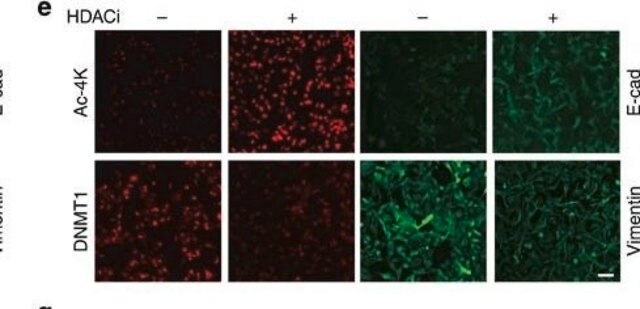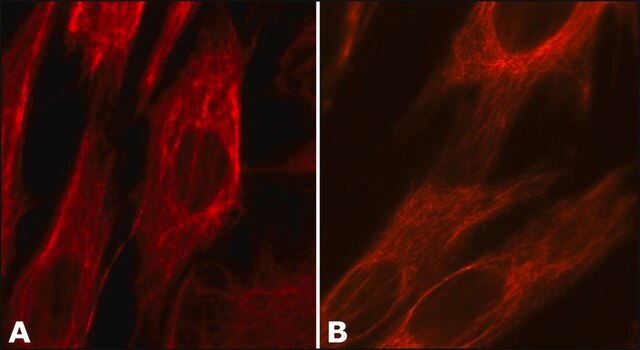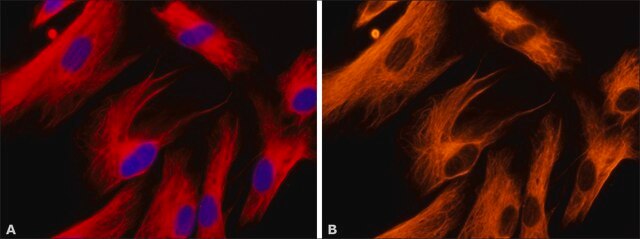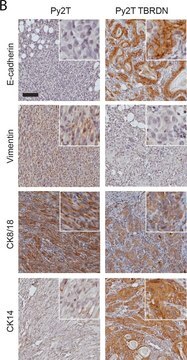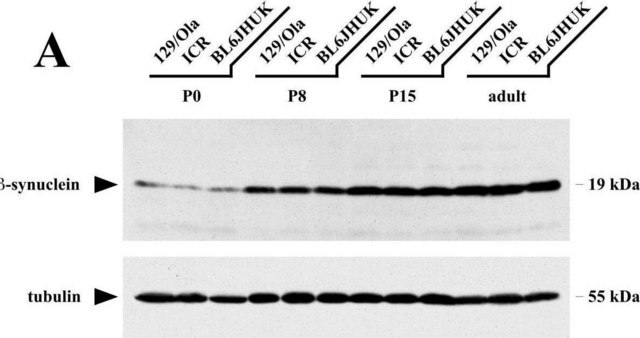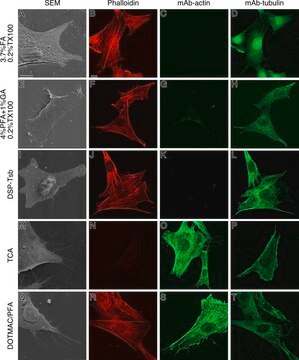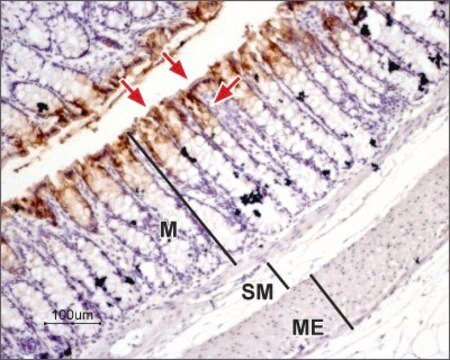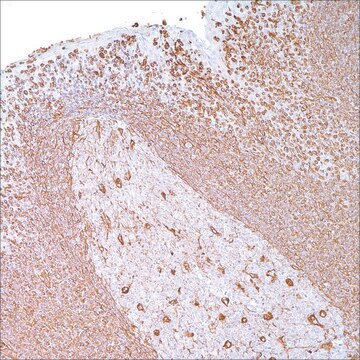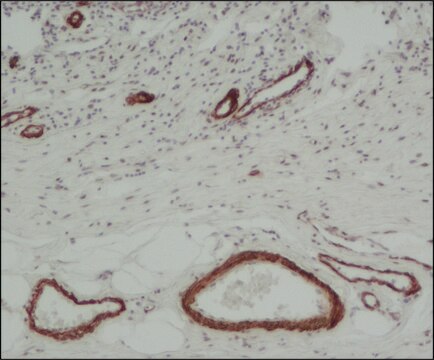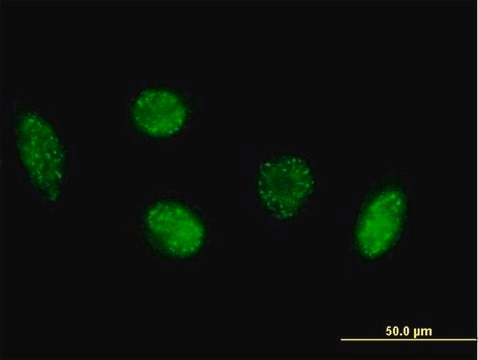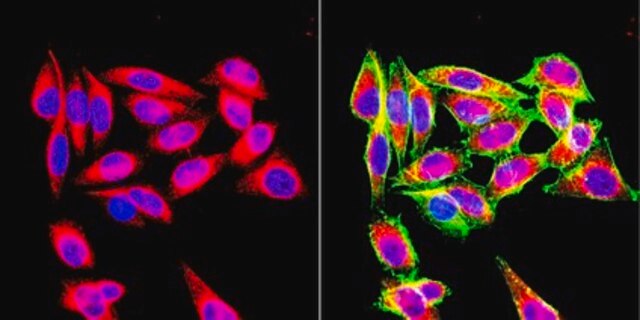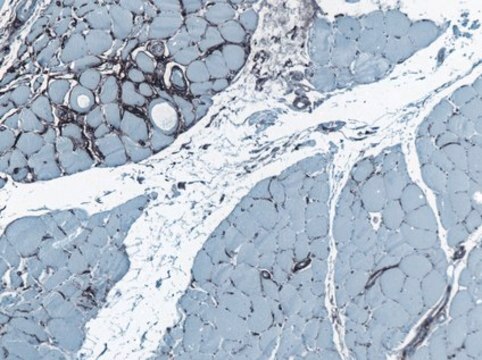V5255
Monoclonal Anti-Vimentin antibody produced in mouse
clone VIM-13.2, ascites fluid
Synonym(e):
Anti-F5H288
About This Item
Empfohlene Produkte
Biologische Quelle
mouse
Qualitätsniveau
Konjugat
unconjugated
Antikörperform
ascites fluid
Antikörper-Produkttyp
primary antibodies
Klon
VIM-13.2, monoclonal
Speziesreaktivität
chicken, rat, human, rabbit, frog, mouse
Methode(n)
indirect immunofluorescence: 1:200 using cultured chicken fibroblasts
western blot: 1:500 using human fibroblasts cell extract
Isotyp
IgM
UniProt-Hinterlegungsnummer
Versandbedingung
dry ice
Lagertemp.
−20°C
Posttranslationale Modifikation Target
unmodified
Angaben zum Gen
human ... VIM(7431)
mouse ... Vim(22352)
rat ... Vim(81818)
Allgemeine Beschreibung
Immunogen
Anwendung
- Immunocytochemical localization of vimentin in normal and pathological tissue of mesenchymal origin.
- It can also be used in immunoblotting
- Immunofluorescence
- Further, anti-vimentin antibody can be used to distinguish tumors and metastatic lesions derived from sarcomas, lymphomas, and melanomas.
Biochem./physiol. Wirkung
Sonstige Hinweise
SAB4200716 Anti-Vimentin antibody, Mouse monoclonal
clone VIM-13.2, purified from hybridoma cell culture
Haftungsausschluss
Not finding the right product?
Try our Produkt-Auswahlhilfe.
Ähnliches Produkt
Lagerklassenschlüssel
10 - Combustible liquids
WGK
WGK 3
Flammpunkt (°F)
Not applicable
Flammpunkt (°C)
Not applicable
Analysenzertifikate (COA)
Suchen Sie nach Analysenzertifikate (COA), indem Sie die Lot-/Chargennummer des Produkts eingeben. Lot- und Chargennummern sind auf dem Produktetikett hinter den Wörtern ‘Lot’ oder ‘Batch’ (Lot oder Charge) zu finden.
Besitzen Sie dieses Produkt bereits?
In der Dokumentenbibliothek finden Sie die Dokumentation zu den Produkten, die Sie kürzlich erworben haben.
Kunden haben sich ebenfalls angesehen
Unser Team von Wissenschaftlern verfügt über Erfahrung in allen Forschungsbereichen einschließlich Life Science, Materialwissenschaften, chemischer Synthese, Chromatographie, Analytik und vielen mehr..
Setzen Sie sich mit dem technischen Dienst in Verbindung.